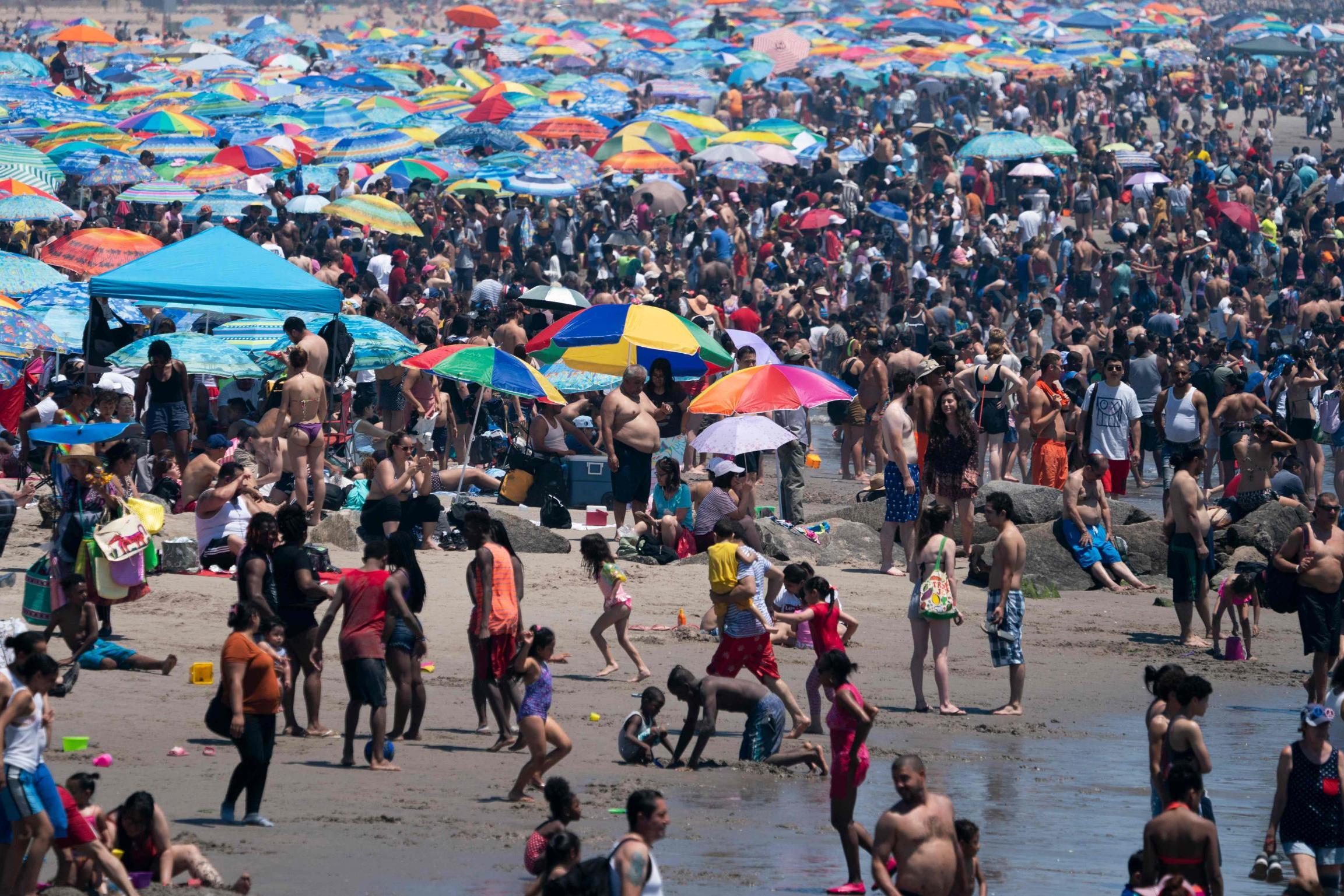US weather: Potentially deadly heat wave set to break records
Heat wave poses a public health threat to tens of millions

The hottest weather in years is stifling two-thirds of the United States, stretching from Texas and Oklahoma northeastward to Maine. The National Weather Service is using strong language to describe the hazards posed by this event.
The Weather Service forecast office in Chicago, for example, is calling this “one of the hotter and more humid air masses since 2012.”
By the time this event ends by Tuesday, 86 per cent of the Lower 48 states will have experienced high temperatures of at least 90 degrees (32C), and close to 50 per cent will have seen temperatures reach or exceed 95 degrees (35C).
On Friday morning, forecasters at the Weather Service forecast office in Philadelphia wrote that this heat wave would be “prolonged, dangerous, and potentially deadly.” Warning of a heat index as high as 115 degrees (46C) on Saturday, forecasters noted: “Heat related illnesses and death can occur in minutes on days such as these in cases of over- exertion or entrapments in hot vehicles. Because of this, extreme caution should be exercised over the weekend with regards to the heat.”
Expansive areas of high pressure, with one located over the central states and another out in the western Atlantic will yield near record warmth for multiple days.
The heat wave, which comes in the midst of what may turn out to be the hottest month Earth has recorded since instrument records began in the late 19th century, poses a public health threat to tens of millions. In a typical year, heat is the top weather-related killer in the US, beating out tornadoes, hurricanes, floods and other weather hazards.
Because this event is occurring at the height of summer, it’s difficult to set temperature many all-time hot temperature records. However, the Weather Service still anticipates many records to fall, especially for warm overnight temperatures.
This heat wave stands out for the high humidity that is accompanying it, as a vast heat dome helps drive Gulf of Mexico and Atlantic Ocean moisture northward.
Dew point temperatures, which are a measure of the amount of water vapor in the air, have climbed well into the oppressive humidity category. The high dew points will also prevent overnight low temperatures from falling significantly overnight.
Already, in Chicago on Friday morning, the temperature had not fallen below 81 degrees (27C) for the low, which – if it holds through midnight – would break the daily record warm overnight minimum temperature, which was 79 degrees (24C), set in 2011.
Such high overnight lows will increase the risk to public health from this hot weather. Heat-related illnesses increase when the human body is not given time to cool off overnight. Heat stress and poor air quality can exacerbate other illnesses and even lead to heat stroke, which can be deadly.
The groups most vulnerable to heat-related illnesses include the elderly, chronically ill, children and outdoor workers. Pets are also vulnerable, particularly if they are left in areas without air conditioning and proper hydration.
During the day, the humidity levels will combine with air temperatures near the century mark to drive heat index values – which is how hot it feels to the human body – as high as 110 to 115 degrees (43C to 46C), particularly along the East Coast, according to Weather Service forecasts.
Along the northern periphery of the heat dome will be what meteorologists refer to as the “Ring of Fire.” This is the battle zone between the heat wave air mass and cooler air to the north. In this area, strong winds in the upper atmosphere can spark severe thunderstorms, including complexes of storms that cause wind damage for hundreds of miles, known as a derecho.
The Weather Service is forecasting such an event today across the Great Lakes, for example, with more storms along the heat dome’s periphery throughout the weekend.
As the climate warms because of human activities, numerous studies have shown that heat waves such as this one are becoming more common and intense, as well as longer-lasting. It’s one of the most robust conclusions of climate science, since as you increase the global average temperature, the odds of hot extremes increase even faster.

According to NOAA data, summer nights have warmed at nearly twice the rate as summer days in the United States, making heat waves a more formidable threat to public health.
Climate change attribution studies have shown that global warming has dramatically increased the likelihood of extreme heat events. In fact, one study published in 2019 found the record-breaking summer heat wave in Japan during 2018 “could not have happened without human-induced global warming.”
In addition, the National Climate Assessment, published by the Donald Trump administration last year found heat waves are on the increase in the United States and have been since the 1960, though the 1930s still stand out as having the most extreme heat events on record in the US, due to weather variability and land use practices at the time.
Washington Post
Join our commenting forum
Join thought-provoking conversations, follow other Independent readers and see their replies
Comments